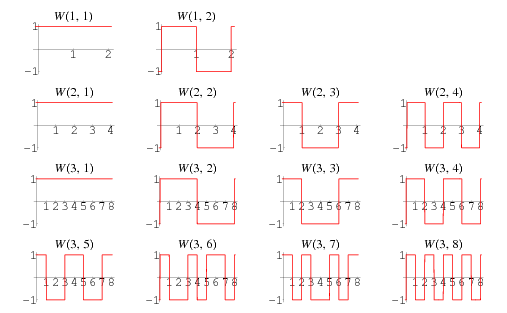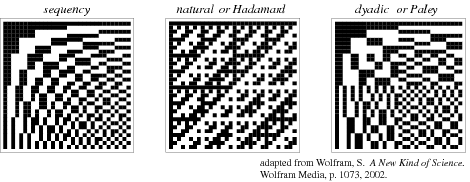

تاريخ الرياضيات

الاعداد و نظريتها

تاريخ التحليل

تار يخ الجبر

الهندسة و التبلوجي


الرياضيات في الحضارات المختلفة

العربية

اليونانية

البابلية

الصينية

المايا

المصرية

الهندية


الرياضيات المتقطعة

المنطق

اسس الرياضيات

فلسفة الرياضيات

مواضيع عامة في المنطق


الجبر

الجبر الخطي

الجبر المجرد

الجبر البولياني

مواضيع عامة في الجبر

الضبابية

نظرية المجموعات

نظرية الزمر

نظرية الحلقات والحقول

نظرية الاعداد

نظرية الفئات

حساب المتجهات

المتتاليات-المتسلسلات

المصفوفات و نظريتها

المثلثات


الهندسة

الهندسة المستوية

الهندسة غير المستوية

مواضيع عامة في الهندسة

التفاضل و التكامل


المعادلات التفاضلية و التكاملية

معادلات تفاضلية

معادلات تكاملية

مواضيع عامة في المعادلات


التحليل

التحليل العددي

التحليل العقدي

التحليل الدالي

مواضيع عامة في التحليل

التحليل الحقيقي

التبلوجيا

نظرية الالعاب

الاحتمالات و الاحصاء

نظرية التحكم

بحوث العمليات

نظرية الكم

الشفرات

الرياضيات التطبيقية

نظريات ومبرهنات


علماء الرياضيات

500AD

500-1499

1000to1499

1500to1599

1600to1649

1650to1699

1700to1749

1750to1779

1780to1799

1800to1819

1820to1829

1830to1839

1840to1849

1850to1859

1860to1864

1865to1869

1870to1874

1875to1879

1880to1884

1885to1889

1890to1894

1895to1899

1900to1904

1905to1909

1910to1914

1915to1919

1920to1924

1925to1929

1930to1939

1940to the present

علماء الرياضيات

الرياضيات في العلوم الاخرى

بحوث و اطاريح جامعية

هل تعلم

طرائق التدريس

الرياضيات العامة

نظرية البيان
Walsh Function
المؤلف:
Beauchamp, K. G.
المصدر:
Walsh Functions and Their Applications. London: Academic Press, 1975.
الجزء والصفحة:
...
29-9-2019
4626
Walsh Function

The Walsh functions consist of trains of square pulses (with the allowed states being  and 1) such that transitions may only occur at fixed intervals of a unit time step, the initial state is always
and 1) such that transitions may only occur at fixed intervals of a unit time step, the initial state is always  , and the functions satisfy certain other orthogonality relations. In particular, the
, and the functions satisfy certain other orthogonality relations. In particular, the  Walsh functions of order
Walsh functions of order  are given by the rows of the Hadamard matrix
are given by the rows of the Hadamard matrix  when arranged in so-called "sequency" order (Thompson et al. 1986, p. 204; Wolfram 2002, p. 1073). There are
when arranged in so-called "sequency" order (Thompson et al. 1986, p. 204; Wolfram 2002, p. 1073). There are  Walsh functions of length
Walsh functions of length  , illustrated above for
, illustrated above for  , 2, and 3.
, 2, and 3.
Walsh functions were used by electrical engineers such as Frank Fowle in the 1890s to find transpositions of wires that minimized crosstalk and were introduced into mathematics by Walsh (1923; Wolfram 2002, p. 1073).
Amazingly, concatenating the Walsh functions ![W(n-1,[2^n/3])](http://mathworld.wolfram.com/images/equations/WalshFunction/Inline9.gif) (while simultaneously replacing
(while simultaneously replacing  s by 0s), where
s by 0s), where ![[x]](http://mathworld.wolfram.com/images/equations/WalshFunction/Inline11.gif) is the ceiling function, gives the Thue-Morse sequence (Wolfram 2002, p. 1073). The values of
is the ceiling function, gives the Thue-Morse sequence (Wolfram 2002, p. 1073). The values of ![[2^n/3]](http://mathworld.wolfram.com/images/equations/WalshFunction/Inline12.gif) are given explicitly by
are given explicitly by  , and the first few are 1, 2, 3, 6, 11, 22, 43, 86, 171, ... (OEIS A005578).
, and the first few are 1, 2, 3, 6, 11, 22, 43, 86, 171, ... (OEIS A005578).

Walsh functions can be ordered in a number of ways, illustrated above (Wolfram 2002, p. 1073). The sequency  of a Walsh function is defined as half the number of zero crossings in one cycle of the time base. In sequency order (left figure), each row has one more color change than the preceding row. In natural (or Hadamard) order (middle figure), the Walsh functions display a nested structure. Dyadic (or Paley) order (right figure) is related to Gray code reordering of the rows (Wolfram 2002, p. 1073).
of a Walsh function is defined as half the number of zero crossings in one cycle of the time base. In sequency order (left figure), each row has one more color change than the preceding row. In natural (or Hadamard) order (middle figure), the Walsh functions display a nested structure. Dyadic (or Paley) order (right figure) is related to Gray code reordering of the rows (Wolfram 2002, p. 1073).
Walsh functions with nonidentical sequencies are orthogonal, as are the functions  and
and  . The product of two Walsh functions is also a Walsh function.
. The product of two Walsh functions is also a Walsh function.
Harmuth (1969) designates the even Walsh functions  and the odd Walsh functions
and the odd Walsh functions  ,
,
 |
 |
 |
(1) |
 |
 |
 |
(2) |
where  is the sequency.
is the sequency.
Taking the matrix product of a set of two-dimensional data (represented as a square matrix with size a power of two) with a corresponding array of Walsh functions is known as the Walsh transform (Wolfram 2002, p. 1073). Walsh transforms can be performed particular efficiently, resulting in the so-called fast Walsh transform.
REFERENCES:
Beauchamp, K. G. Walsh Functions and Their Applications. London: Academic Press, 1975.
Harmuth, H. F. "Applications of Walsh Functions in Communications." IEEE Spectrum 6, 82-91, 1969.
Sloane, N. J. A. Sequence A005578/M0788 in "The On-Line Encyclopedia of Integer Sequences."
Thompson, A. R.; Moran, J. M.; and Swenson, G. W. Jr. Interferometry and Synthesis in Radio Astronomy. New York: Wiley, p. 204, 1986.
Tzafestas, S. G. Walsh Functions in Signal and Systems Analysis and Design. New York: Van Nostrand Reinhold, 1985.
Walsh, J. L. "A Closed Set of Normal Orthogonal Functions." Amer. J. Math. 45, 5-24, 1923.
Wolfram, S. A New Kind of Science. Champaign, IL: Wolfram Media, pp. 573 and 1072-1073, 2002.
 الاكثر قراءة في التفاضل و التكامل
الاكثر قراءة في التفاضل و التكامل
 اخر الاخبار
اخر الاخبار
اخبار العتبة العباسية المقدسة

الآخبار الصحية















 قسم الشؤون الفكرية يصدر كتاباً يوثق تاريخ السدانة في العتبة العباسية المقدسة
قسم الشؤون الفكرية يصدر كتاباً يوثق تاريخ السدانة في العتبة العباسية المقدسة "المهمة".. إصدار قصصي يوثّق القصص الفائزة في مسابقة فتوى الدفاع المقدسة للقصة القصيرة
"المهمة".. إصدار قصصي يوثّق القصص الفائزة في مسابقة فتوى الدفاع المقدسة للقصة القصيرة (نوافذ).. إصدار أدبي يوثق القصص الفائزة في مسابقة الإمام العسكري (عليه السلام)
(نوافذ).. إصدار أدبي يوثق القصص الفائزة في مسابقة الإمام العسكري (عليه السلام)


















